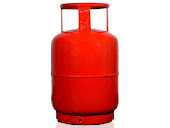The demise of the public sector
Many iconic public sector enterprises of the 1970s are either sick, dying or getting there: Indian Telephone Industries was the grandfather of telephone equipment manufacture; today, it is awaiting a buyer. Many have been sold, for example, Modern Bakeries, VSNL, Computer Maintenance Corporation, BALCO, etc. Many will disappear in the coming years. I would bet on BSNL, MTNL, Air India and HMT not surviving. The principal reason has been the lack of a holistic management ethos. The heavy hand of the bureaucracy and ministers influence many decisions, especially on investment, pricing, etc. There are others, a key one being the lack of a business strategy and the consequent focus on what was the original purpose of the enterprise without taking advantage of new opportunities. Lack of innovation, poor research and development, all enterprises characterise them. Coal India is a monopoly that controls almost all the coal in India and uses old technologies, is inefficient, corrupt and unreliable. It is forcing power plants to work well below capacity. Air India was stolen blind by its ministers with the connivance of bureaucrats and should have been closed down a long time ago. The list is endless if one goes through it and one can foresee even the apparently good ones having sown the seeds of their destruction.
At the state level, it is much worse. The best example is in the state electricity boards that will lose R1,00,000 crore this year. They allow large-scale theft of electricity, give it free to strong political groups such as farmers, are headed by itinerant bureaucrats, while engineers hold managerial positions for which they are not trained. Take the example of the iconic NTPC, considered the jewel in the public enterprise crown. It was set up in the days of the ‘command and control economy’ when the public sector was expected to hold the commanding heights of the economy. There was no competition or comparable enterprise. As citizens and consumers, we knew no better and were satisfied. NTPC was an efficient company but it was protected by the owner, the central government. When I first became a regulator I was shocked at the blatant favouritism to NTPC by the government in relation to its customers—the SEBs. I recall a perverse incentive scheme based on achieving 64% (or so) plant load factor, when NTPC was already at 80%.
NTPC kept earning incentives on past performance, paid for without question by the SEBs. When the Northern Grid collapsed in the winter of 1999 (I think), one reason was that NTPC continued to pump power into the Grid even though demand was less, and so the frequency went beyond limits and the Grid collapsed. NTPC was not penalised. NTPC had an excellent selection and training scheme for its engineers. DV Kapur, its founder, must be credited for it. This gave NTPC strong engineering leadership in power generation, but it did not do so in engineering, projects and construction, which became extremely important since NTPC was primarily charged with responsibility to add to generation capacity in the Five-Year Plans. But in no year were targets achieved because NTPC could not reach targets. It had not developed the management skills to set up and run an EPC business, so that it could build multiple plants at the same time. In the last few years, new private sector entrants are adding substantial capacities through their own EPC divisions. NTPC had the funds, the people, but not the ambition or the drive to create this construction capacity.
When government introduced the mega and ultra mega power projects, the private sector quickly bid for and won them. Some are set up, others are nearing completion. The policy itself was initiated by a former director of NTPC who became the power secretary, RV Shahi. He recognised that the private sector could do it and is doing so. I still recall power minister Kumaramangalam telling the then chairman of NTPC, Rajinder Singh, in my presence that he would get the government to set up another NTPC if the current one kept failing to meet targets for new generation capacity. Unfortunately, he died and no power minister since has understood what needs to be done to make a public sector giant take the risks involved in building new capacity.
Like Hindustan Unilever in the fast moving consumer goods sector, NTPC has provided excellent power engineers to the private sector. But it has failed to move successfully into other aspects of the power sector, especially distribution. It must be said that it has done terrific work in taking over failed state-run generation plants and transforming them into highly-efficient producers. In my view, NTPC benefited from being government-owned and, for a long time, being in a monopoly position in thermal generation at the national level. It has benefited from the largesse of the central government (before CERC, it got special tariff preferences, accelerated depreciation which bolstered cash flows rather than the ostensible reason of paying off borrowings).
It is an increasingly incongruous player today. Its main work is to provide the central government with capacity that it can farm out to favoured state governments. If it is not to go the way of Indian Telephone Industries, HMT and other iconic public sector companies, it needs to transform itself into a business, without bureaucratic control, with entrepreneurship, risk taking, holistic management skills, and managed purely on commercial lines by business managers, not mere engineers. The author is the first chairman of CERC, independent director on R-Infra and R-Power and an extensive commentator on infrastructure.
From the pages of FINANCIAL EXPRESS. 17th October
Read More...





